UN rights office accuses Hasina government of potential crimes against humanity
The high-profile report alleges Hasina personally ordered killings
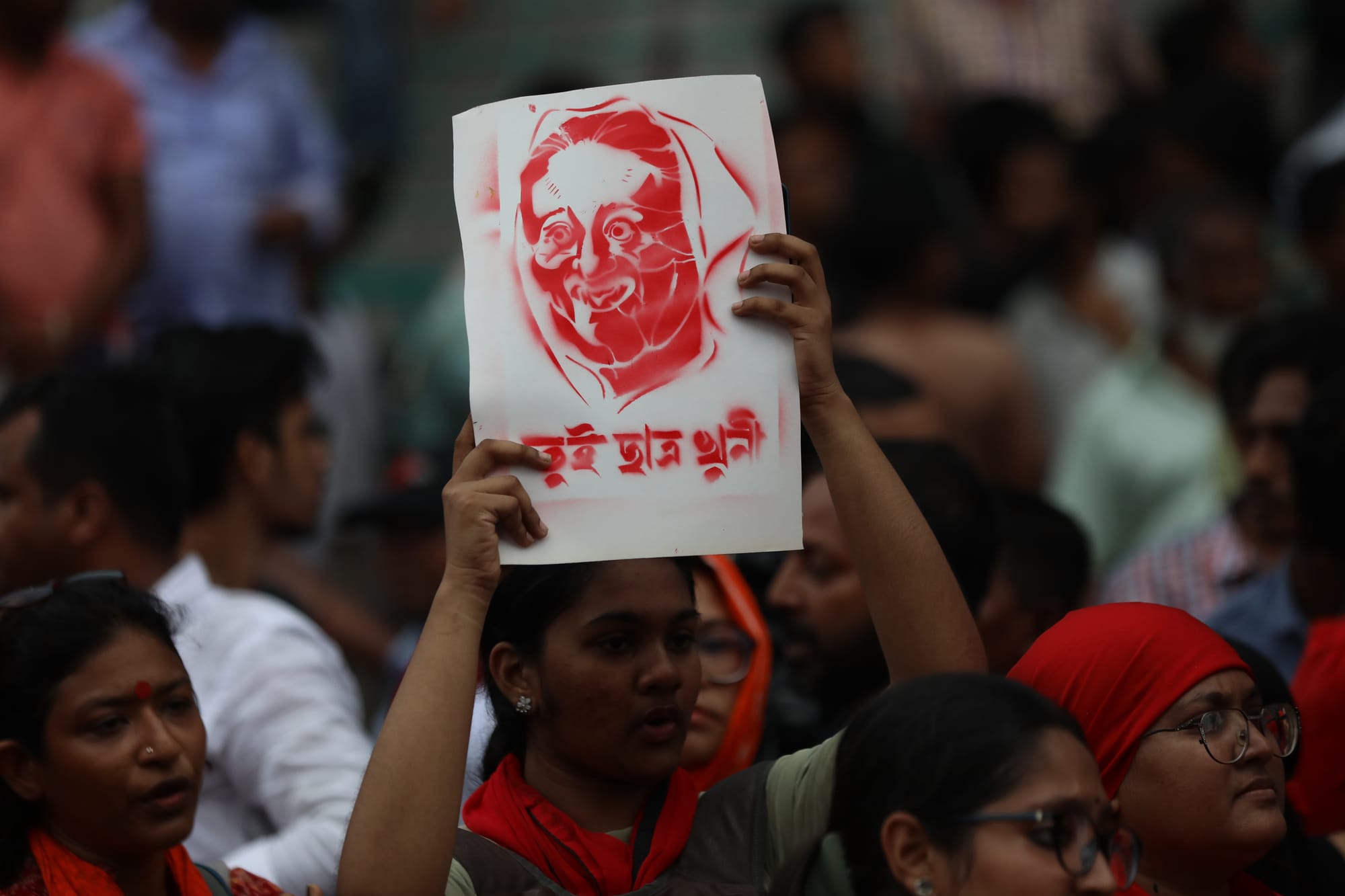
The United Nations’ top human rights office has found sufficient grounds to conclude that the Sheikh Hasina government’s crackdown on protests in July and August last year may amount to crimes against humanity, according to a report published on Wednesday.
The report names Hasina, who served as an authoritarian prime minister at the time, and her officials as responsible for what it describes as “systematic and widespread extrajudicial killings” carried out under a co-ordinated strategy of repression.
This high-profile document, issued by the Office of the United Nations High Commissioner for Human Rights (OHCHR) following a dedicated fact-finding mission, is expected to strengthen domestic demands in Bangladesh for accountability over the alleged atrocities committed last summer. It also increases pressure on India, which backed Hasina’s regime and has provided her with refuge since she fled there on August 5th 2024.
The long-awaited investigation catalogues serious crimes ranging from unlawful killings, torture and abductions, to surveillance, in painstaking detail. These acts were allegedly carried out by security forces and the Awami League party under the direct orders of Hasina and her key lieutenant, Asaduzzaman Khan Kamal, the former home minister who is also currently in India.
In compiling its findings, the OHCHR interviewed more than 230 victims and witnesses, along with 36 government, security and political party officials who possessed direct knowledge of the events. Additionally, investigators authenticated a range of evidence — videos, photographs, medical records, and weapon analyses — that corroborated the main accounts obtained through interviews.
Although the report contains few surprises, its blow-by-blow account of alleged atrocities by the police, Border Guards Bangladesh (BGB), the Rapid Action Battalion (RAB), and, to a lesser extent, the army — often in conjunction with Awami League party cadres — represents the most comprehensive and authoritative documentation yet of what many observers have referred to as a massacre. It also details the extensive support provided by intelligence agencies, including the Directorate General of Forces Intelligence (DGFI), the Detective Branch and the National Telecommunication Monitoring Centre (NTMC).
The crisis began in early-July last year, when student-led protests erupted nationwide following a High Court decision that reinstated a quota-based recruitment system for civil service jobs, a policy seen as favouring Awami League supporters. The Hasina government’s combative and dismissive rhetoric only stoked the protests further. Authorities then turned to brute force — an oft-used tactic that had previously succeeded in suppressing political dissent — to quell the unrest. However, when graphic footage of the killings circulated on social media, public outrage quickly spread beyond student groups. By early-August, these protests had snowballed into a wider anti-government movement, culminating in Hasina’s ouster on August 5th.
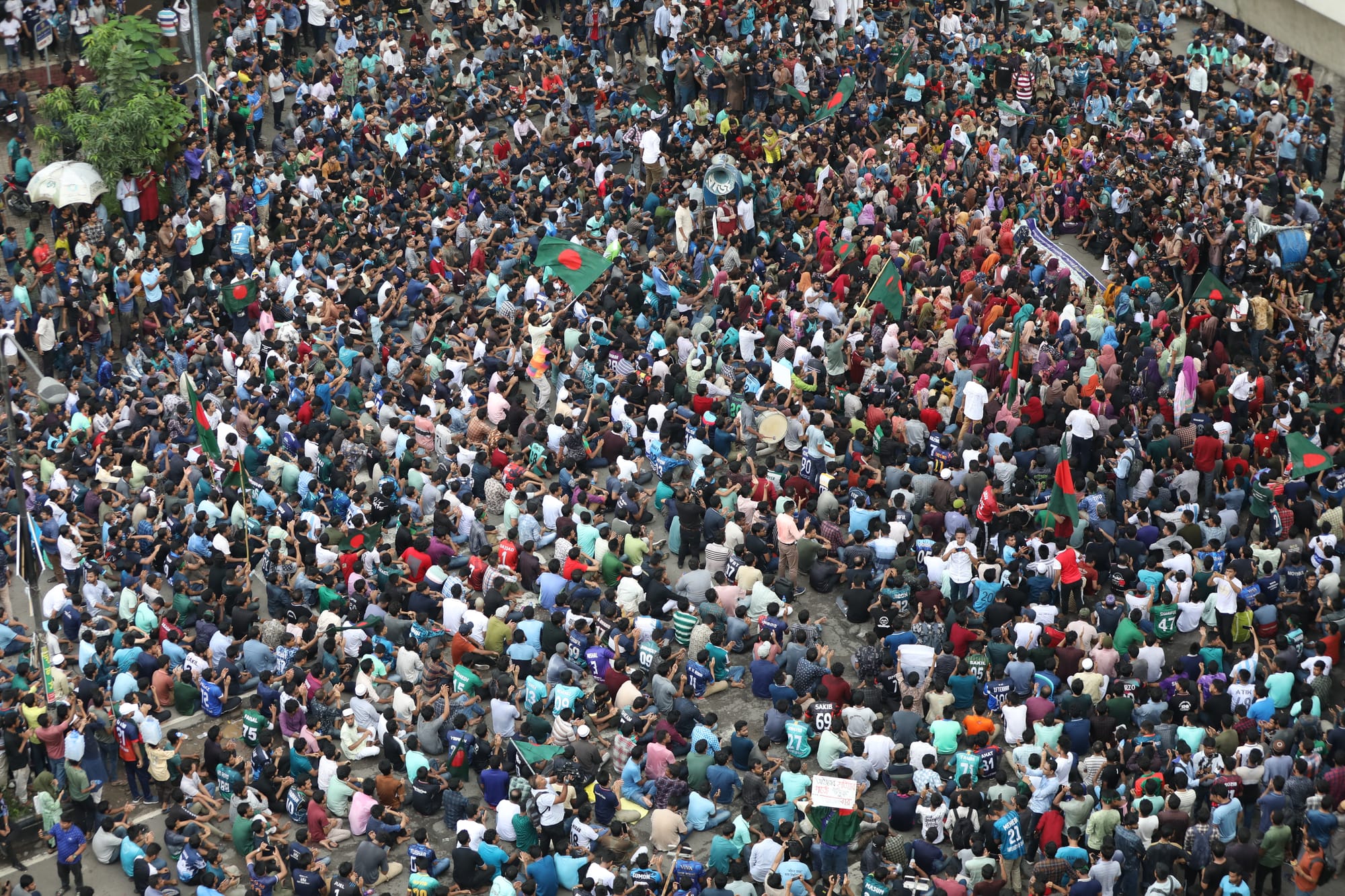
Hasina ordered security forces to “kill them and hide their bodies”
The UN report holds Hasina — prime minister at the time, with direct oversight of the security apparatus — responsible for complicity in the violence. Investigators say Hasina was provided with “daily reports” by intelligence agencies; one document dated July 21st specifically warned her of the security forces’ use of excessive force. On July 29th, she reportedly discussed the protests at a cabinet meeting. Nevertheless, the OHCHR concluded that, rather than intervening to stop abuses, the prime minister “actively reinforced” efforts to conceal human rights violations by wrongly blaming protesters and opposition parties.
The report describes a meeting on July 19th in which Hasina allegedly instructed senior officials to, “arrest the ringleaders of the protests, the troublemakers, kill them and hide their bodies.”
Mohammad A. Arafat, a minister who served as a de facto spokesperson for the Hasina government during the crisis, insisted that Hasina was intent on protecting the public, and that security forces did not have authorisation to open fire. But evidence collected by the OHCHR suggests the Awami League regime was preparing for a “more militarised approach” well before the protests escalated. One senior official testified that Hasina believed the deployment of heavily armed units would scare away most protesters, leaving only what the government termed “jihadists” on the streets.
Although some pro-Hasina officials have insisted that both the prime minister and the home minister had instructed security forces to use restraint, the OHCHR found these assertions “lacked credibility,” pointing to a crackdown that was organised, systematic and confirmed by testimonies, call logs and other evidence. Investigators also concluded that the decision to shut down internet services was made at the ministerial level in an effort to stem the flow of information about the government’s violent response.
“The political leadership and senior security leadership organised and directed the attack to fulfil their objective of violently and unlawfully suppressing the protests and remaining in power,” the report said.
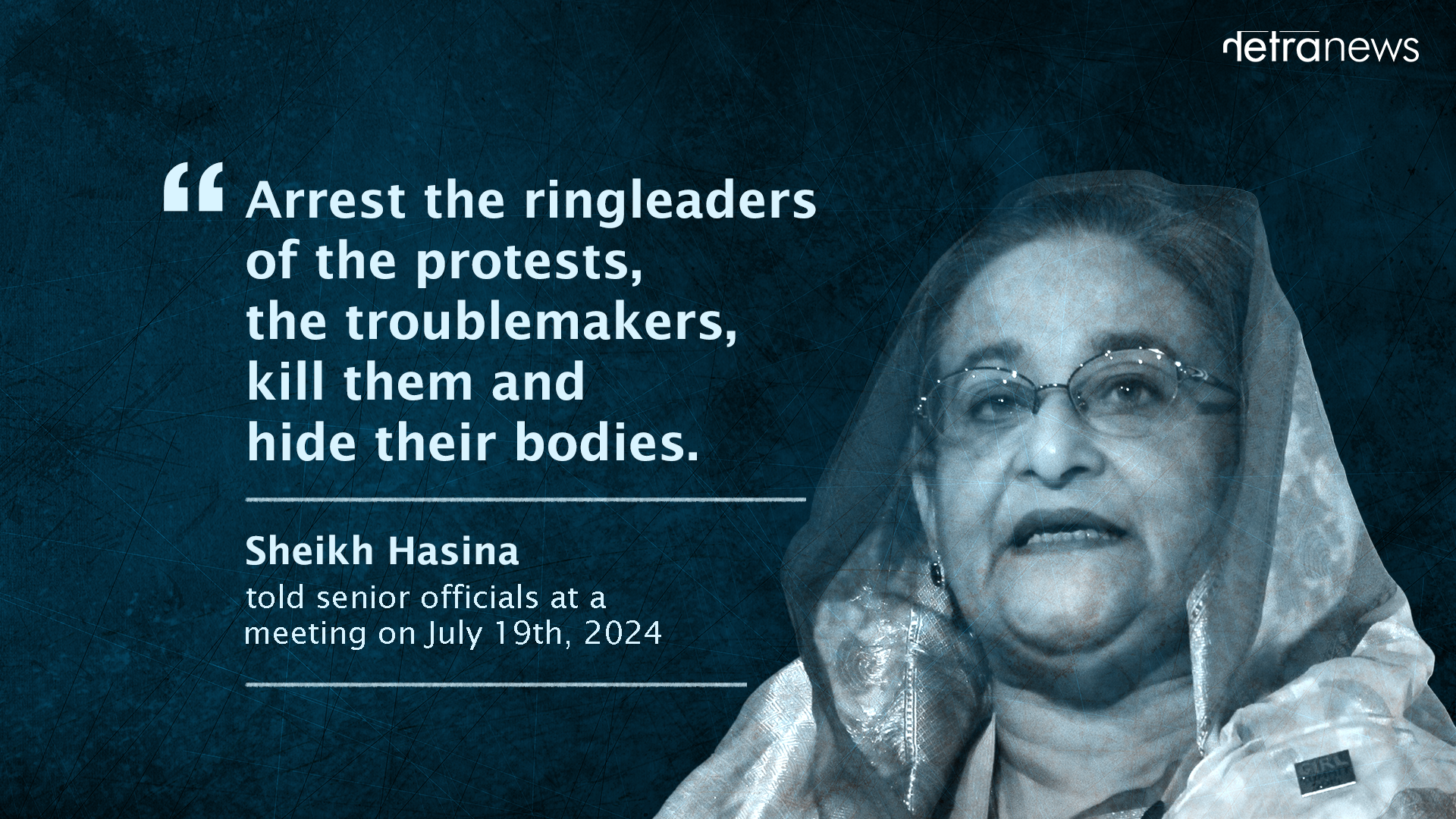
The “Core Committee”
The fact-finding report also found that a “core committee,” led by then-Home Minister Asaduzzaman Khan Kamal, co-ordinated a series of violent attacks by security agencies and intelligence services aimed at crushing nationwide protests in mid-2024. The committee allegedly devised detailed operations and made direct deployments to quash the movement.
According to the report, in addition to Kamal, regular attendees of these committee meetings — often held at the minister’s residence in the evenings — included several senior figures. Among them were former chief of police Chowdhury Abdullah Al-Mamun; the BGB Director General, Major General Mohammad Ashrafuzzaman Siddiqui; the head of the RAB, Harun-Ar-Rashid (under United States sanctions); Major General A. K. M. Aminul Haque, Director General of Ansar and the Village Defence Party; the head of the DGFI, Major General Hamidul Haque; the chief of the National Security Intelligence (NSI), Major General Hossain Al Morshed; Monirul Islam, chief of the police’s Special Branch; and Ziaul Ahsan, the head of the NTMC. The report also maintains that a general from the Bangladesh Army joined the committee from July 20th, shortly after the imposition of a nationwide curfew.
In testimonies collected by the OHCHR, senior officials confirmed that Mr. Kamal gave “direct orders and directives” for serious human rights violations. On July 18th, during a meeting of the “Core Committee,” the home minister instructed the BGB — armed with military-grade 7.62mm rifles — “to use more lethal force to suppress the protests,” as per the report. According to the investigation, Kamal personally visited Jatrabari — a strategic point on the highway connecting the capital, Dhaka, to the largest port in Chattogram — alongside the chief of police, at a time when the police and RAB were allegedly firing indiscriminately, killing numerous protesters. Authenticated video evidence obtained by the OHCHR showed a police officer admitting to shooting protesters.
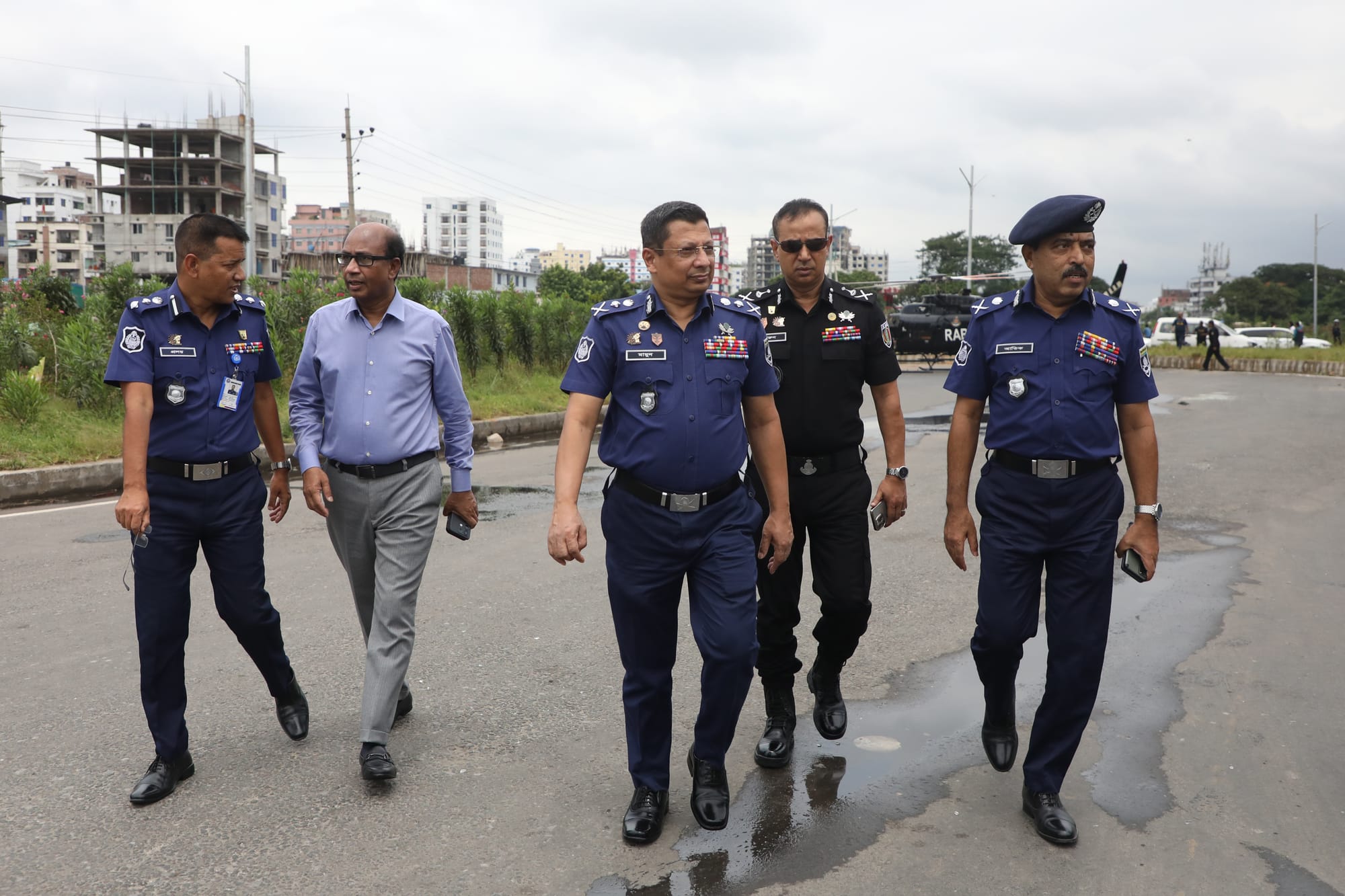
Army’s use of force: ‘At least one protester killed’
Although the OHCHR documented fewer incidents involving lethal force by the army compared with the police, BGB, RAB, and other agencies, it identified at least three separate occasions when army personnel fired military rifles loaded with live ammunition — and confirmed that on at least one occasion, a protester was shot and killed.
On July 20th, soldiers from the Bangladesh Army opened fire in the Mohammadpur area of Dhaka after protesters threw bricks at security forces. Despite minimal danger to life, the army, acting on the order of an executive magistrate, reportedly took “aimed shots” at demonstrators. That same day, another group of soldiers fired warning shots before using live ammunition against protesters upon an executive magistrate’s instruction to “shoot to confirm two or three bodies.” Photographs and eyewitness accounts corroborated the incident, according to OHCHR investigators.
One documented extrajudicial killing took place on August 5th outside the Jamuna Future Park mall on Dhaka’s Progati Sarani Road, where a peaceful crowd was celebrating rumours of the government’s collapse, believing the army had arrived to protect them. Initially firing into the air, one soldier lowered his weapon and shot a protester dead; other soldiers then discharged 20 to 25 rounds into the crowd. Several videos obtained by the OHCHR, along with eyewitness testimonies and geolocated footage, confirm that the victim posed no threat at the time he was killed.
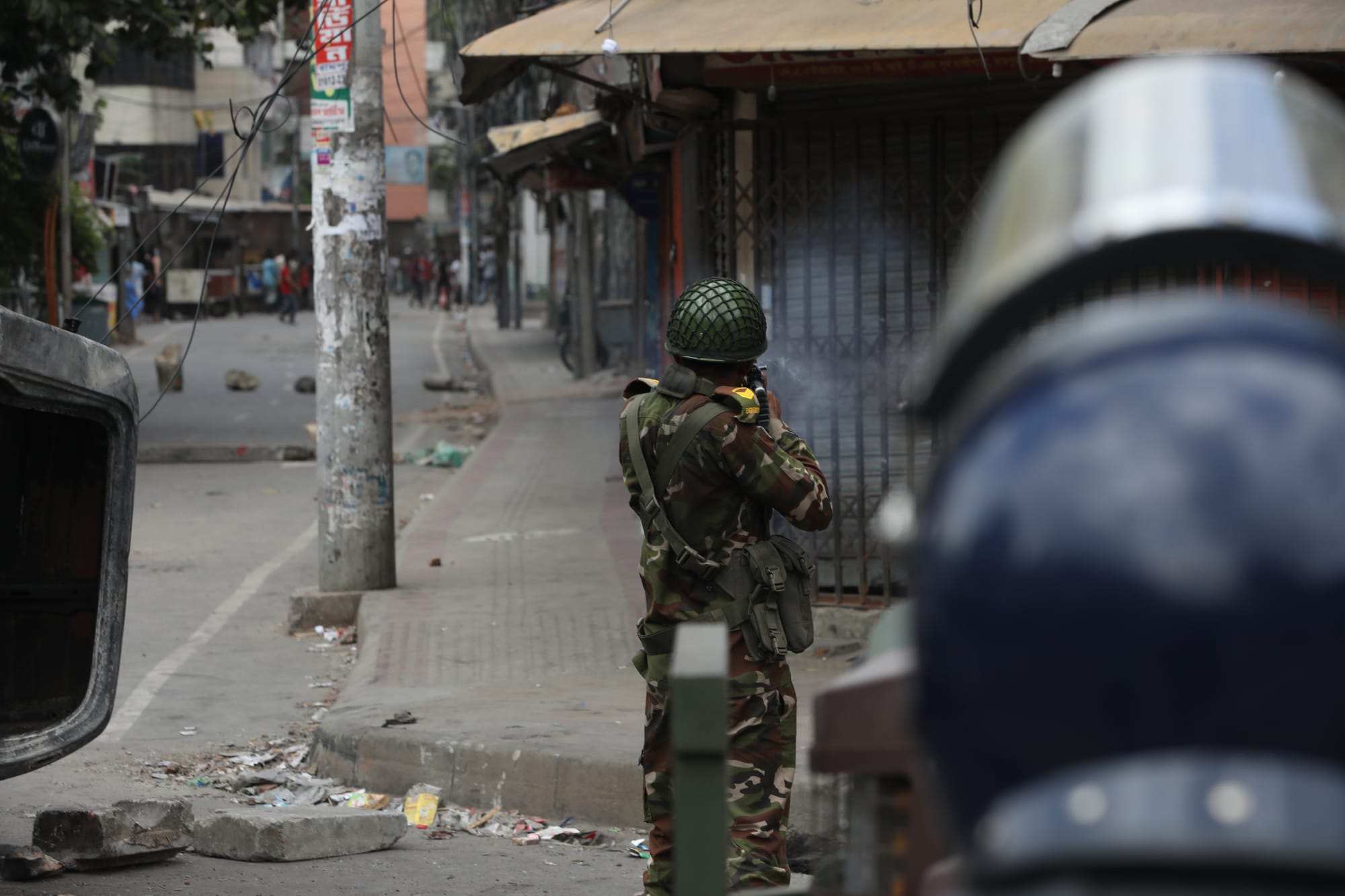
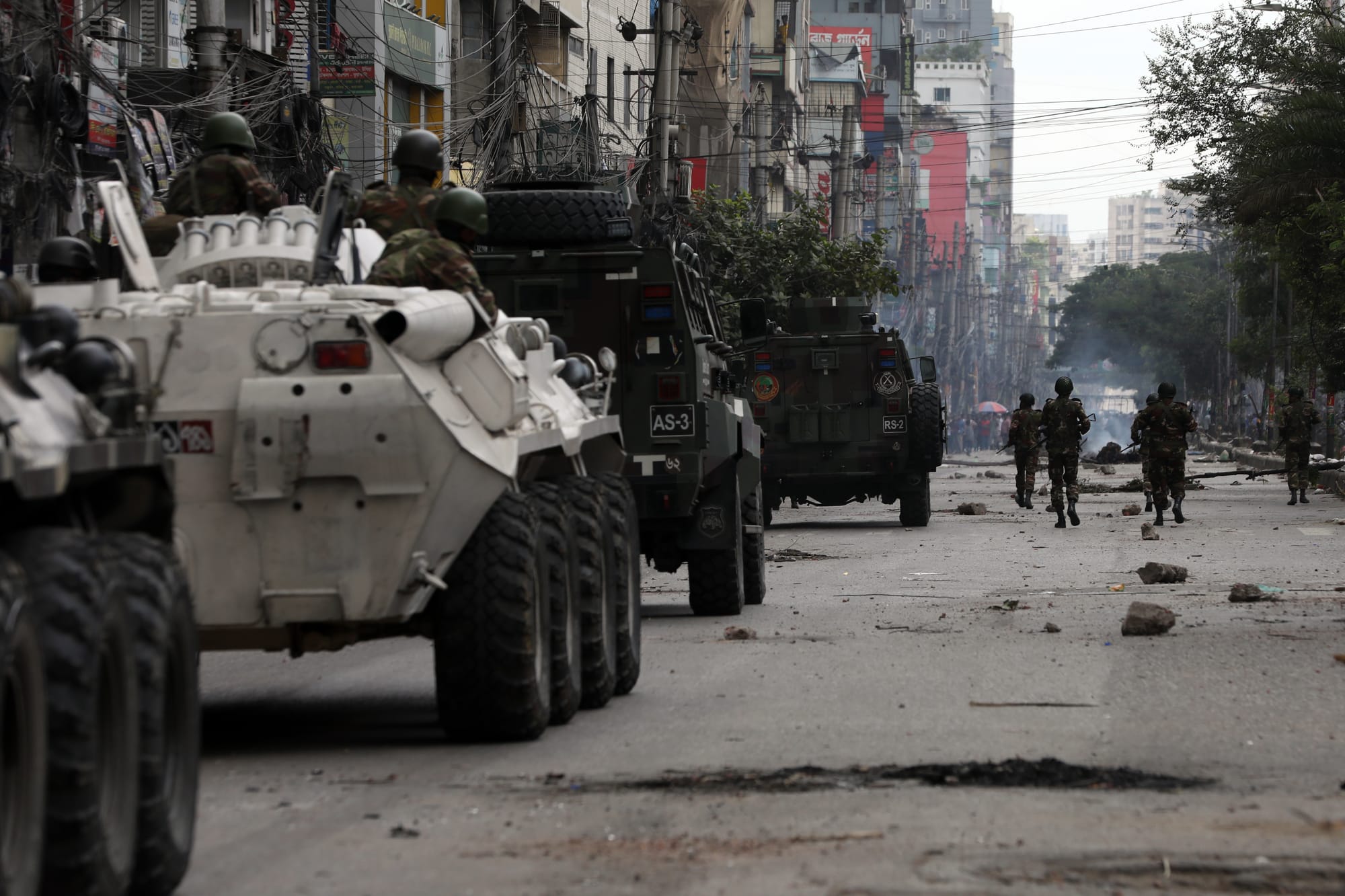
A soldier of the Bangladesh Army shooting at protesters in the Rampura area on 20th July 2024 (left) and Bangladesh Army personnel patrolling the streets in Rampura area with armoured vehicles on the same day (right). OHCHR found at least three incidents where the Army shot lethal ammunition targeting the protesters, including one on 20th July 2024 in Rampura. Photograph: Jibon Ahmed/Netra News.
Beyond these direct clashes, the army’s intelligence arm, the DGFI, stands accused of carrying out enforced disappearances. According to the report, DGFI operatives abducted student leader Nahid Islam, taking him to the notorious “Aynaghar,” a secret prison whose existence Netra News had revealed in 2022, where he was tortured. His bruised lower body caused widespread alarm when he was later dumped in the Purbachal suburb of Dhaka. Additionally, the DGFI allegedly abducted six protest co-ordinators in the final week of July and handed them over to the police’s Detective Branch, which has formal arrest powers. According to a senior official’s testimony to the OHCHR, then-Prime Minister Hasina personally approved these actions, after being informed by the home minister.
DGFI, along with the NSI and other intelligence agencies, is further accused of obstructing medical treatment for victims, intimidating doctors who treated wounded protesters and warning survivors and their families to remain silent. Meanwhile, the NTMC, led by a military general, reportedly provided crucial electronic surveillance data to security forces, enabling targeted arrests throughout July and early-August.
Although the OHCHR investigators were given access to most officials, the report notes that despite its requests, the army and the DGFI chiefs were not made available for interviews.

Awami League’s role
In concert with the deployment of security forces, the ruling Awami League mobilised its student wing, the Bangladesh Chhatra League, as well as other affiliated groups, to attack and intimidate protesters. According to the OHCHR, party loyalists frequently used blunt weapons, machetes and occasionally firearms, often supplementing the police.
Senior Awami League officials are said to have incited violence in the expectation that the Chhatra League would “confront the protesters.” On July 15th, Saddam Hussein, the president of Chhatra League, declared that “those who seek to create anarchy or mock the [Liberation War] martyrs will be dealt with on the streets,” apparently targeting demonstrators. That morning, the Awami League’s general secretary, Obaidul Quader, endorsed the threat, proclaiming that the Chhatra League stood ready to respond to statements by leaders of the quota reform movement.
In interviews with the OHCHR, senior Awami League officials sought to distance the party from these incidents, dismissing them as “political rhetoric” and describing a particularly incendiary remark by Quader as a “mistake”. In spite of this, none could point to a single directive issued by the party hierarchy calling on its supporters to refrain from violence. “This was despite acknowledgment by some of these interviewees that the Awami League in fact had the ability to control when and where armed supporters would deploy,” the report states.
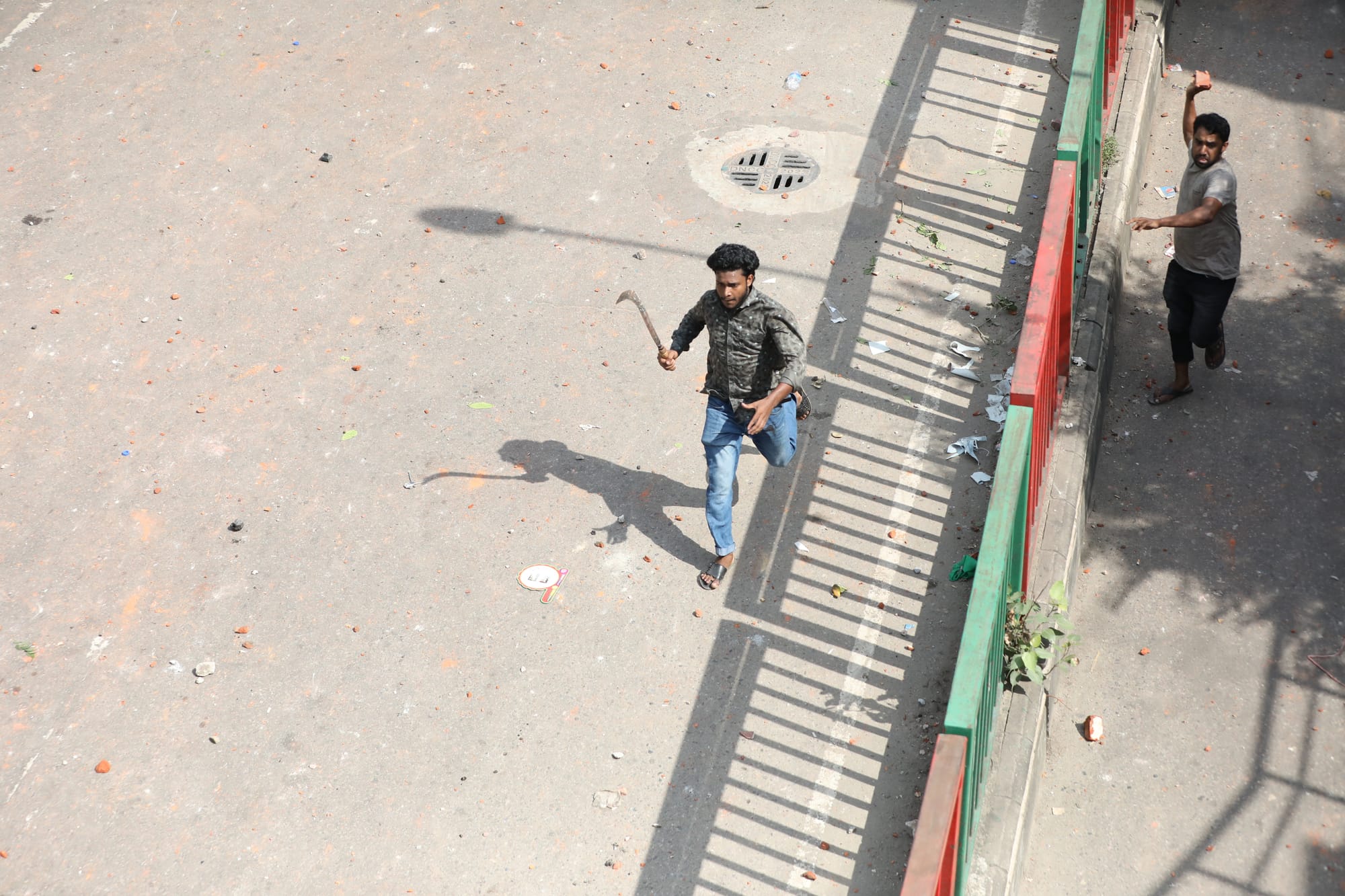
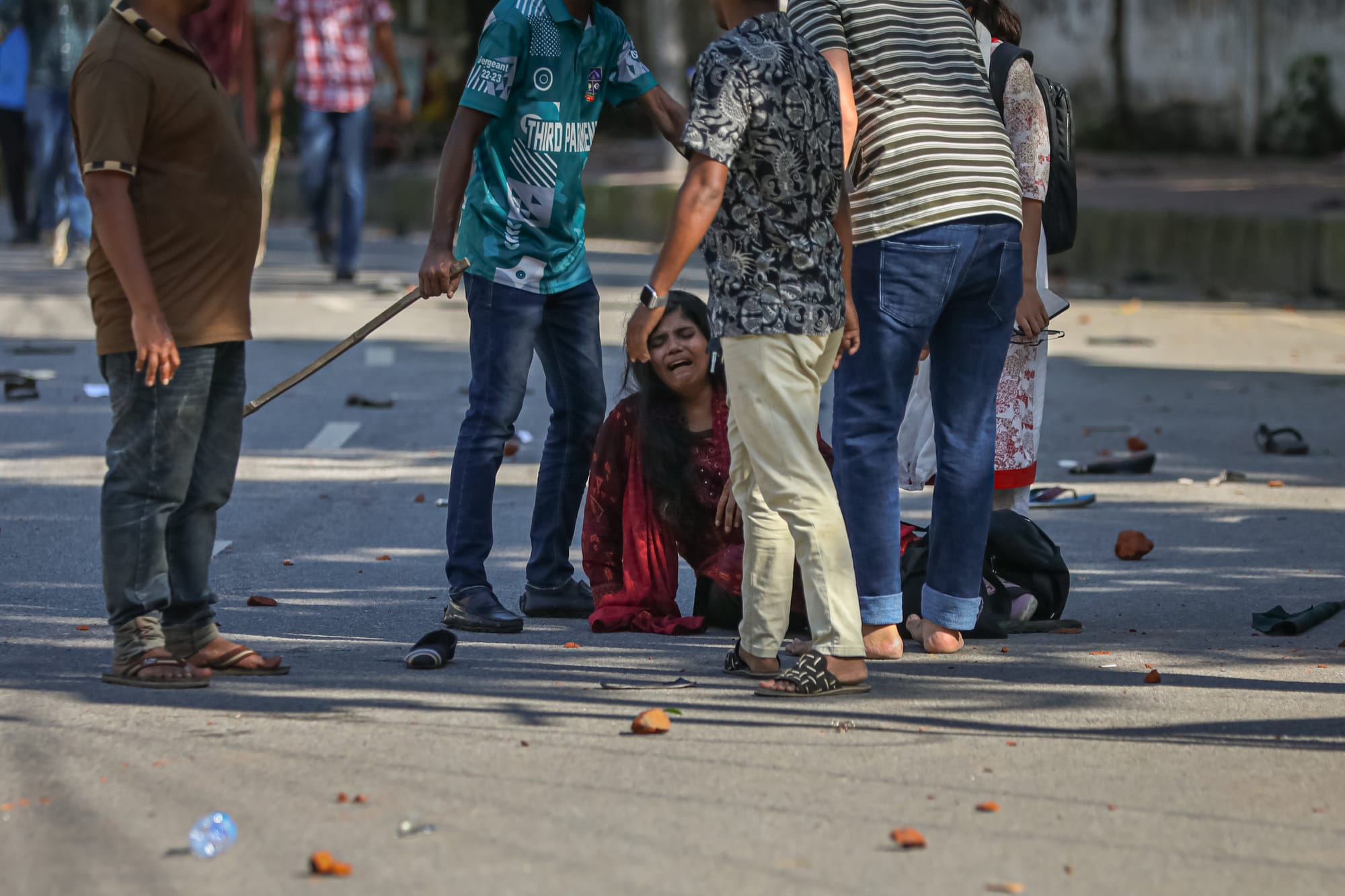
An Awami League activist chasing protesters with machete on 15th July in New Market area (left) and a girl, after being beaten by Awami League's student wing Chhatra League's armed cadres pleading to be rescued at the Dhaka University area on the same day. Photograph: Jibon Ahmed/Netra News.
Investigators documented multiple instances of Chhatra League violence following such inflammatory rhetoric. In one chilling episode, armed student-wing supporters forced their way into a hospital and attacked injured protesters and medical personnel in the emergency wards, causing further injuries, including fractures and head wounds. Female students reported verbal and physical intimidation, and some were threatened with sexual assault.
The report also cites two Awami League parliamentarians who allegedly led armed assaults — one in Ashulia of Savar and the other in Mirpur — on August 4th, in co-ordination with the police.
Systematic and widespread abuses
Summarising its findings, the OHCHR concluded that there are “reasonable grounds to believe” that the large-scale attacks on civilians — resulting in more than 1,400 deaths — were carried out with the knowledge and authority of the government’s political leadership, and thus constitute crimes against humanity under international law.
The report invokes Article 7(1) of the Rome Statute of the International Criminal Court, which defines crimes against humanity as widespread or systematic assaults on civilian populations, conducted with the perpetrators’ awareness that their actions form part of a broader attack. The definition encompasses murder, torture and other offences committed in pursuit of a state or organisational policy.
Between July 15th and August 5th, “acts of murder, torture, imprisonment, and other inhumane acts were consistently directed against a defined group of civilians,” the OHCHR found, typically in urban centres and disproportionately targeting those who were young or unemployed. The Hasina government is believed to have gradually escalated its campaign, recruiting “a continuously expanding circle of armed actors” and closely co-ordinating with armed Awami League supporters. “All these acts formed part of a systematic and widespread attack,” the report states, describing how the scale and geographic spread of the violence followed the expanding protests.
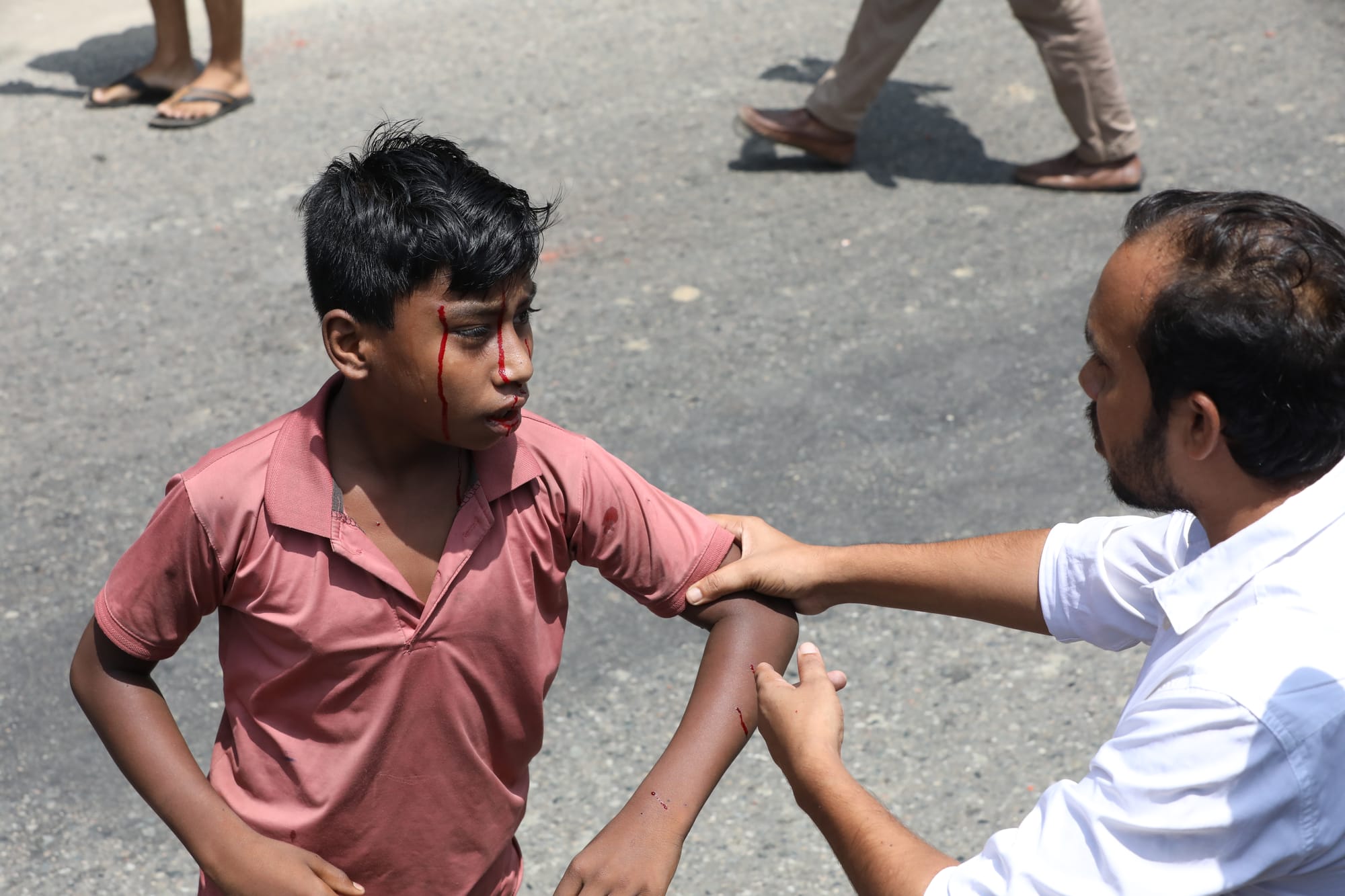
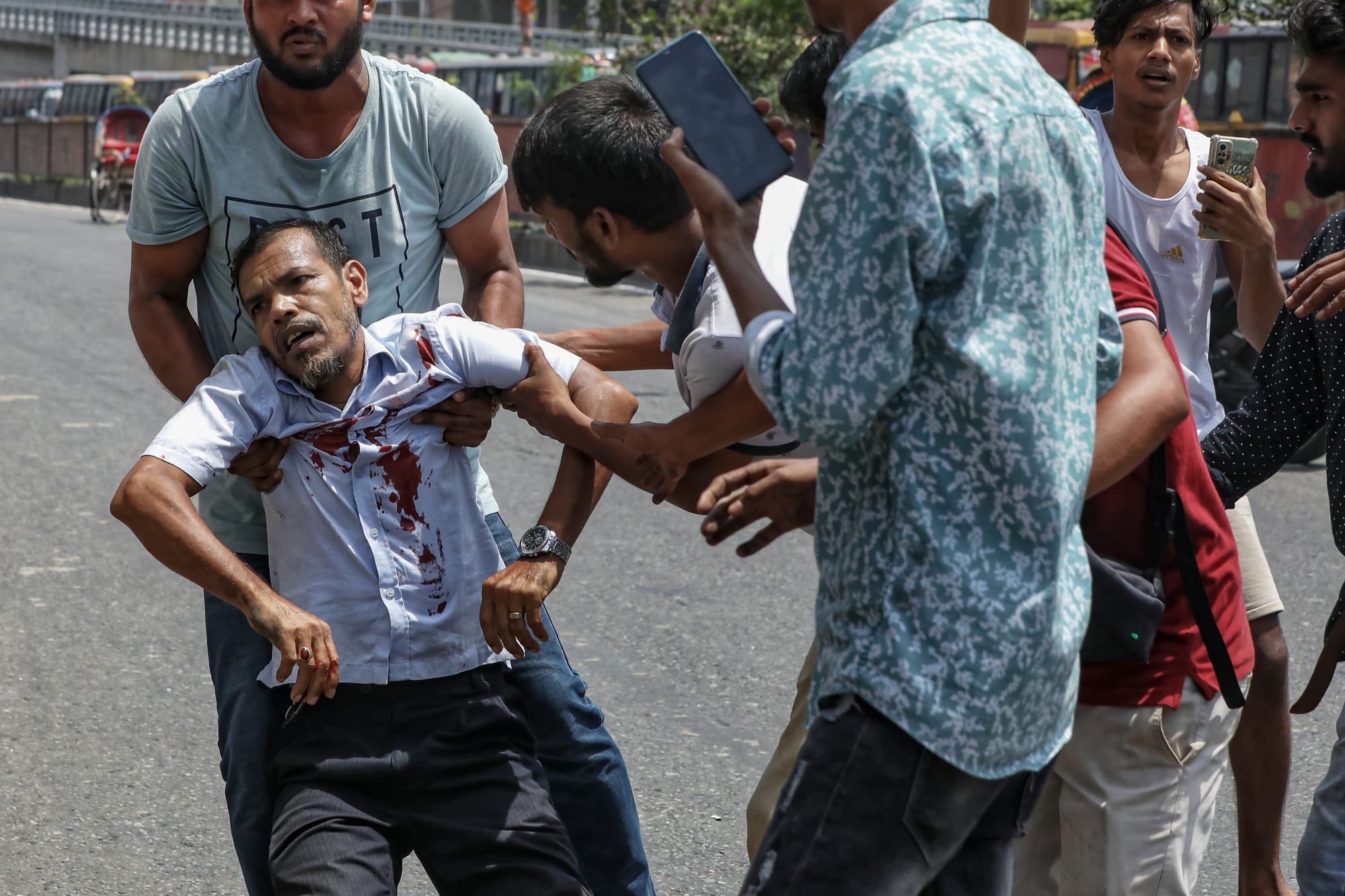
A child and an injured man are being taken to a safe place after they were shot in the Badda area on July 18th 2024. Photograph: Jibon Ahmed/Netra News.
“In this context, it would appear that a significant number of the killings by state security forces and Awami League supporters would amount to the crime against humanity of murder,” the UN human rights office wrote, referring specifically to Article 7 of the Rome Statute.
The fact-finding mission says violence against indigenous and minority groups, such as Hindus and Ahmadiyya Muslims, occurred as a result of the power vacuum created by the unrest and overrunning of police stations following the Awami League’s fall. But it also acknowledges that “misinformation has clouded the understanding and context of several incidents.”
Recommendations
The report recommends establishing “an effective and sufficiently independent human rights screening mechanism” to ensure no official or member of the security forces credibly accused of abuses is nominated for peacekeeping missions. Until such a mechanism is in place, the UN body urges authorities to refrain from submitting any personnel linked to the RAB, DGFI or the Dhaka Metropolitan Police Detective Branch, as well as any BGB battalions implicated in the 2024 crackdown or earlier episodes of violent suppression.
Investigators also call on the government to “compile and preserve relevant evidence, including official orders and other internal documents and forensic evidence,” and to initiate disciplinary and criminal proceedings against individuals who attempt to destroy or hide such material.
Further recommendations include disbanding the RAB and legislating to bar the armed forces from handling domestic security matters, save in exceptional circumstances requiring parliamentary authorisation and under strict civilian control.
In the words of the OHCHR, these measures aim to “prevent the recurrence of future atrocities and to restore confidence in Bangladesh’s institutions,” ensuring that the victims’ voices are heard and that those responsible for the violence finally face justice.●
(Editorial Note: The 27th paragraph was amended after publication to correct the estimated number of deaths. Besides, AKM Nazmul Hasan was mistaken as the BGB chief; the correct name is Mohammad Ashrafuzzaman Siddiqui. The report has been updated.)